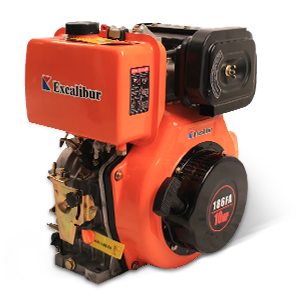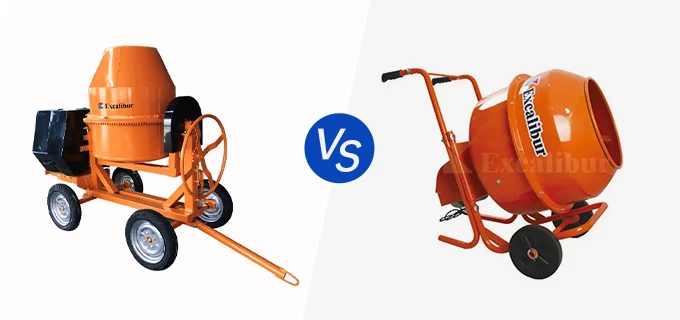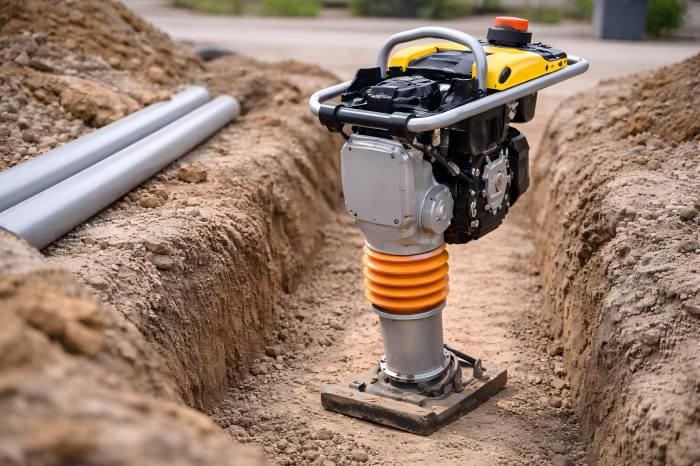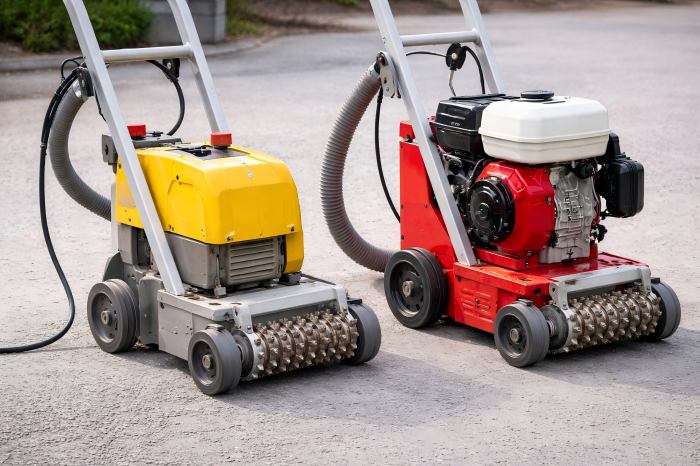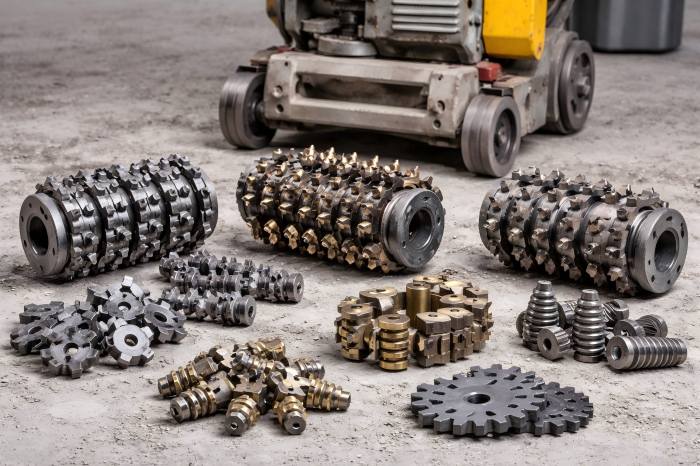Choosing the right mixer can greatly affect both the efficiency and cost of your project, whether it’s a small DIY task or a large-scale commercial construction. Among the most common types of concrete mixers are the towable concrete mixers and the wheelbarrow concrete mixers. Each has its own benefits, and recognizing these differences will guide you in making the best choice for your upcoming project.
What is a Towable Concrete Mixer?
A towable concrete mixer, often referred to as a portable concrete mixer, is a type of mixer designed for larger volumes of concrete. This mixer is typically mounted on a frame with wheels, allowing it to be towed behind a vehicle like a truck or a tractor. Towable concrete mixers are designed for easy transportation to different areas of a construction site, making them ideal for larger projects where concrete needs to be mixed in bulk.
Key Features of Towable Concrete Mixers:
- Capacity: Generally holds between 3 to 12 cubic feet (85 to 340 liters) of concrete.
- Motor: Can be powered by electric, gas, or diesel engines.
- Towing Mechanism: Features a tow bar for easy vehicle hitching and transport.
- Versatility: Suitable for mixing large batches of concrete on-site, ideal for foundations, driveways, or large construction jobs.
What is a Wheelbarrow Concrete Mixer?
A wheelbarrow concrete mixer is a smaller, more compact concrete mixing tool, often used for small-scale projects. As the name suggests, it is mounted on a wheelbarrow-like frame, with one or two wheels for easy maneuverability. Unlike towable mixers, these units are usually manually operated and designed for lighter work where mixing concrete in small batches is required.
Key Features of Wheelbarrow Concrete Mixers:
- Capacity: Typically holds 1 to 3 cubic feet (28 to 85 liters) of concrete.
- Motor: Most models use electric motors, though some smaller versions may be manually powered.
- Compact Size: Simple to transport around the construction site and easy to store in a garage.
- Ideal Use: Perfect for smaller projects, such as sidewalk repairs, small foundations, or mixing mortar.
Towable Concrete Mixer vs Wheelbarrow Concrete Mixer: Key Differences
To understand which mixer is best suited for your project, let’s compare both mixers across several important parameters.
| Feature | Towable Concrete Mixer | Wheelbarrow Concrete Mixer |
| Capacity | 3 to 12 cubic feet | 1 to 3 cubic feet |
| Power Source | Gas, diesel, or electric | Primarily electric |
| Towing | Yes, can be towed behind a vehicle | No towing, manual operation |
| Mobility | Moderate (can be towed but not as mobile once set up) | High mobility, easy to maneuver |
| Ideal for | Large scale projects, commercial, foundations, driveways | Small to medium-sized projects, residential, DIY |
| Mixing Speed | Fast, mixes large batches quickly | Slower, designed for small batches |
| Price Range | $500 to $3,000+ | $200 to $600 |
| Weight | Heavy (depends on capacity and motor) | Light and portable |
| Maintenance | Requires more maintenance due to engine and towing mechanism | Low maintenance, typically only the motor and drum |
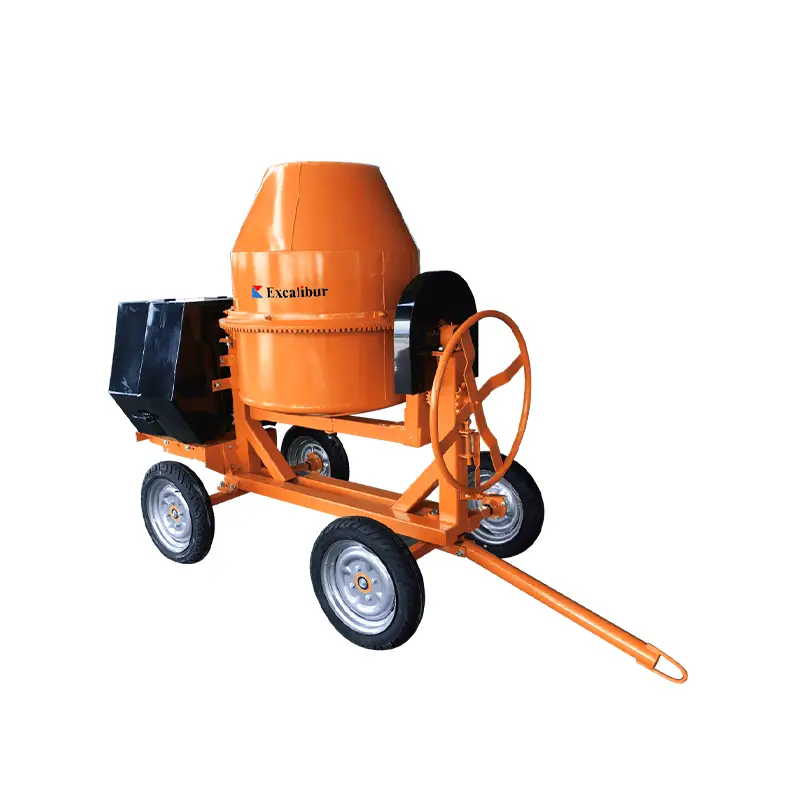
Pros and Cons of Towable Concrete Mixers
Pros:
Larger Capacity: Towable concrete mixers can handle large amounts of concrete, making them ideal for bigger projects.
Faster Mixing: These mixers are designed to mix concrete quickly, saving time on larger jobs.
Towing Capability: The ability to tow the mixer from one area to another makes it ideal for construction sites where concrete needs to be poured over large areas.
Durability: Towable mixers are generally more durable than wheelbarrow models, thanks to their heavy-duty construction and long-lasting components.
Cons:
Size and Weight: Towable concrete mixers can be large and heavy, making them difficult to store and move when not in use.
More Expensive: Due to their larger capacity and motor, these mixers come with a higher price tag, especially when powered by gas or diesel engines.
Requires a Tow Vehicle: To transport a towable mixer, you need a vehicle capable of towing it, which may not always be convenient.
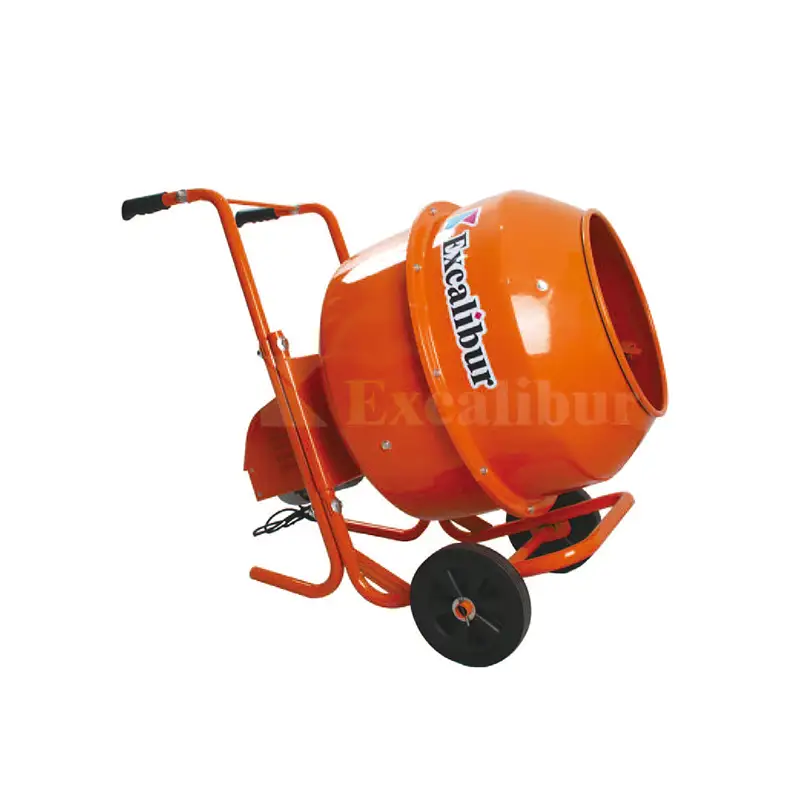
Pros and Cons of Wheelbarrow Concrete Mixers
Pros:
Compact and Lightweight: Wheelbarrow mixers are portable, easy to store and move.
Affordable: These mixers are generally much more affordable than towable mixers, making them ideal for smaller budgets or DIY projects.
Perfect for Small Projects: Great for residential projects like sidewalks, patios, or small foundations where only small batches of concrete are needed.
Easy Maintenance: With fewer parts, wheelbarrow mixers are low-maintenance and easy to use.
Cons:
Limited Capacity: Due to the smaller size, these mixers are not suitable for large-scale projects.
Manual Operation: While some models have electric motors, many wheelbarrow mixers require manual handling, which can be tiring for larger jobs.
Slower Mixing: The smaller capacity also means that mixing larger batches takes more time and effort.
Which Concrete Mixer Should You Choose?
When deciding between a towable concrete mixer and a wheelbarrow concrete mixer, several factors need to be considered based on your project’s specific needs:
Project Size
If you’re working on a large-scale project (e.g., foundation, driveway, or commercial site), a towable concrete mixer is the better option due to its larger capacity and faster mixing.
If you’re working on a small project (e.g., sidewalk repairs, small garden walls, or DIY projects), a wheelbarrow concrete mixer will be more than sufficient and easier to manage.
Portability
A wheelbarrow concrete mixer is more portable and compact, ideal for confined spaces or places where ease of movement is crucial.
A towable concrete mixer requires a vehicle for transport, making it more suited for large open spaces.
Budget
For budget-conscious buyers, the wheelbarrow concrete mixer is a more affordable solution, costing significantly less than the larger towable models.
The towable concrete mixer is an investment suited to commercial contractors or those involved in multiple large-scale projects.
Efficiency
Towable mixers are faster and more efficient for large-scale projects, reducing time and effort significantly.
Wheelbarrow mixers are more manual but are sufficient for small batches and low-volume mixing.
Best Use Cases for Towable vs. Wheelbarrow Concrete Mixers
Towable Concrete Mixers:
- Large-scale construction projects (e.g., foundations, driveways, pavements)
- Jobs requiring high-volume concrete mixing
- Sites with multiple locations or significant distances to cover
- Ideal for use in rough terrains or large open areas
Wheelbarrow Concrete Mixers:
- Smaller residential or DIY projects (e.g., patios, garden walkways)
- Projects with limited space or narrow access
- Homeowners, landscapers, or small contractors
- Perfect for projects needing small concrete batches at a time.
Choosing between a towable concrete mixer and a wheelbarrow concrete mixer ultimately depends on the scale, requirements, and budget of your project. For large, commercial jobs or when you need to mix large batches quickly, a towable concrete mixer will provide the necessary power, capacity, and efficiency. However, for smaller, more confined projects where budget and portability are key, a wheelbarrow concrete mixer offers an affordable and effective solution.

